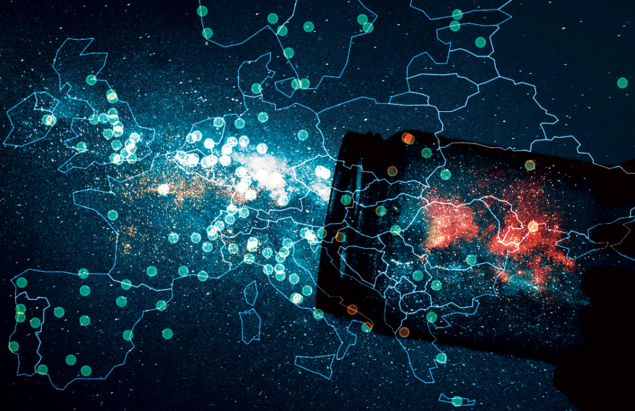
The European Consortium for Astroparticle theory (EuCAPT) held its first annual symposium from 5 to 7 May. Hundreds of theoretical physicists from Europe and beyond met online to discuss the present and future of astroparticle physics and cosmology, in a dense and exciting meeting that featured 29 invited presentations, 42 lightning talks by young researchers, and two community-wide brainstorming sessions.
Participants discussed a wide array of topics at the interface between particle physics, astrophysics and cosmology, with particular emphasis on the challenges and opportunities for these fields in the next decade. Rather than focusing on experimental activities and the discoveries they might enable, the sessions were structured around thematic areas and explored the interdisciplinary multi-messenger aspects of each.
Two sessions were dedicated to cosmology, exploring the early and late universe. As stressed by Geraldine Servant (Hamburg), several unresolved puzzles of particle physics – such as the origin of dark matter, the baryon asymmetry, and inflation – are directly linked to the early universe, and new observational probes may soon shed new light on them.
Julien Lesgourgues (Aachen) showed how the very same puzzles are also linked to the late universe, and cautiously elaborated on a series of possible inconsistencies between physical quantities inferred from early- and late-universe probes, for example the Hubble constant. Those inconsistencies represent both a challenge and an extraordinary opportunity for cosmology, as they might “break” the standard Lambda–cold-dark-matter model of cosmology, and allow us to gain insights into the physics of dark matter, dark energy and gravity.
We are witnessing a proliferation of theoretically well-motivated models
New strategies to go beyond the standard models of particle physics and cosmology were also discussed by Marco Cirelli (LPTHE) and Manfred Lindner (Heidelberg), in the framework of dark-matter searches and neutrino physics, respectively. Progress in both fields is currently not limited by a lack of ideas – we are actually witnessing a proliferation of theoretically well-motivated models – but by the difficulty of identifying experimental strategies to conclusively validate or rule them out. Much of the discussion here concerned prospects for detecting new physics with dedicated experiments and multi-messenger observations.
Gravitational waves have added a new observational probe in astroparticle physics and cosmology. Alessandra Buonanno (Max Planck Institute for Gravitational Physics) illustrated the exciting prospects for this new field of research, whose potential for discovering new physics is attracting enormous interest from particle and astroparticle theorists. The connection between cosmic rays, gamma rays and high-energy neutrinos was explored in the final outlook by Elena Amato (Arcetri Astrophysical Observatory), who highlighted how progress in theory and observations is leading the community to reconsider some long-held beliefs – such as the idea that supernova remnants are the acceleration sites of cosmic rays up to the so-called “knee” – and stimulating new ideas.
In line with EuCAPT’s mission, the local organisers and the consortium’s steering committee organised a series of community-building activities. Participants stressed the importance of supporting diversity and inclusivity, a continuing high priority for EuCAPT, while a second brainstorming session was devoted to the discussion of the EuCAPT white paper currently being written, which should be published by September. Last but not least, Hannah Banks (Cambridge), Francesca Capel (TU Munich) and Charles Dalang (University of Geneva) received prizes for the best lightning talks, and Niko Sarcevic (Newcastle) was awarded an “outstanding contributor” prize for the help and support she provides for the analysis of the EuCAPT census (pictured).
The next symposium will take place in 2022, hopefully in person, at CERN.








